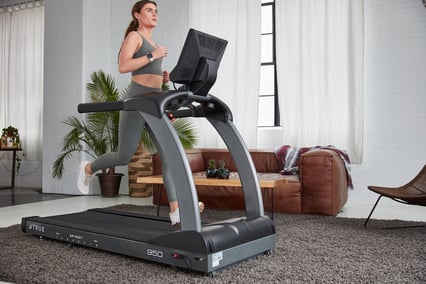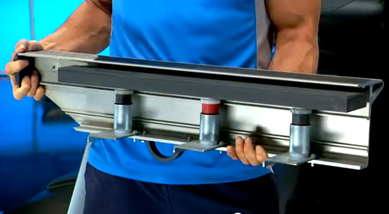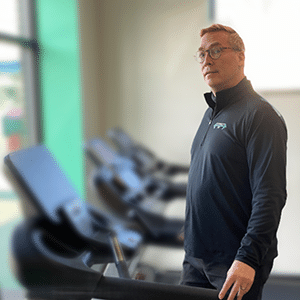What to Look for in a Treadmill
By Norm Morrison
What makes a good treadmill? I hear that question a lot. I would have to say that after 25 years both selling and designing fitness equipment, one of the most misunderstood purchases is a treadmill purchase. So as a Local Expert, I'm going to go over a few basics here about things you should always look for in a treadmill model and things that most people don't know.
Service
The first secret is that treadmills break. Two motors, belts and decks, people running hard on them, etc. Buying a treadmill from anyone online or any national chain without a local service department isn't a smart move.
There’s more than one “best”
Sometimes people say it differently when asking what matters in a treadmill, but they'll often ask which treadmill is "the Best".
The best doesn’t have to be the most expensive treadmill. Good treadmills are available at varying price points and can offer a fine training and workout experience. So we have to get a bit deeper, "What do you mean by best?" Do you mean the best warranty, or most durable? Do you meet the best cushioning system? Do you mean the best "connected content"? Do you mean the best programming or best acceleration? Do you mean the best treadmill models or features - like incline, top speed, wireless heart rate monitoring, the best screen, or which training apps are compatible? These are all different ingredients, often unrelated. So you have to determine what you need for your workout, and prioritize based on that.
But my 25 years have shown me that a good treadmill is a combination of all of these factors.

Cushioning
Deck cushioning is probably the number one thing to look at when you're buying a treadmill because everyone needs to take care of their joints. And all deck cushioning systems are not created equal, not even close. Most cushioning systems are actually gimmicks, more marketing than anything else.
The best way to understand cushioning is to visualize a running shoe. If you ever look at a running shoe, it's designed and built to ‘give’ only on impact and then stabilize the arch as you move into the stroke and then to remove any cushion as a user transitions to the push-off. That's why every single running shoe has this big ‘lip up’ in the front.
That's how your typical treadmill should work, too. It should only be really taking impact away on the point of impact , the front of the deck-- having ‘shock absorption’ anywhere else than the ‘shock’ of impact can actually add to lateral instability, and cause extra stress to the ligaments and tendons that stabilize the knee and ankles and hips. So a good cushioning system should give on impact, stabilize in the middle and then have a totally stable push-off -- that is how your treadmill cushioning should work.
Bouncing decks that seem to ‘sag’ and bounce in the middle may FEEL bouncy, but the give shouldn’t be in the middle. And this is also why slatted treadmills feel hard, because their cushion is built in the slat and has to be the same throughout the stroke. Which is like running in boat shoes.
Also, many higher end treadmill brands enhance their cushioning with an orthopedic, thicker belt. I've been watching clients for years, and well over 90% of clients prefer the orthopedic belt when they can try multiple models.
Warranty - Look for the PARTS Warranty
The next thing you want to understand about consumer treadmills is that the warranty is critical, both to protect you, the owner, but also as a representation of how long that treadmill is going to last before it needs service. But you need to look for the parts warranty. Lots of treadmills will have a lifetime or 30-year frame warranty, but then you’ll notice a very short warranty on the wear items; the belt, the deck, the rollers, and the lower board.
That’s because treadmill motors and frames almost never break. But your parts warranty is critical -- your belt, your deck, your rollers, the electronics. This is where you want to see a competitive warranty. And this is one of those places where you can tell if a treadmill manufacturer is really taking care of you, the buyer, down the road.
If you're only seeing a two-year or three-year warranty on the parts, that is a very bad sign. And this is very common in "department store or internet treadmills". Even a five-year parts warranty is substandard in a treadmill.
Also, your most important parts warranty is actually on your treadmill belt and your deck, because that is where the action happens. The belt moves over the deck and creates friction and that wears slippery surface on the deck. And as a consequence, the treadmill has to work harder and harder as time goes on.
Can’t Decide? Choose the Quieter Treadmill
If you're really caught between a couple of different brands, go with the quieter treadmill. And of course, everybody thinks a quiet treadmill is a good thing. But as someone who's actually designed treadmills and worked with them for 25 years -- friction is noise. So when you hear a lot of noise in a treadmill, that indicates it’s got more friction on the running belt surface and the deck. The more friction the treadmill has, the less it’s going to last.
Content/Connected
This is a tough area, as really connected treadmills are still sort of in their infancy, And most connected brands make mediocre treadmills with the worst warranties. If you are really motivated to get a treadmill with connected content, make sure that it has at least 3 years of parts warranty, and make sure that they make their own content. This is critical, both for quality, contiguity, but also because we've see a number of legacy treadmill companies get an app for some content before that is only good for a year or two before the contract runs out. Then they leave you high and dry.
If you have more questions about treadmills, like horsepower comparisons, deck size, orthopedic belts, etc, just ask here!




COMMENTS